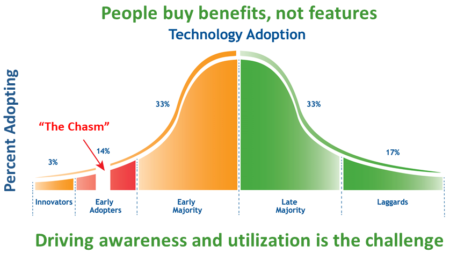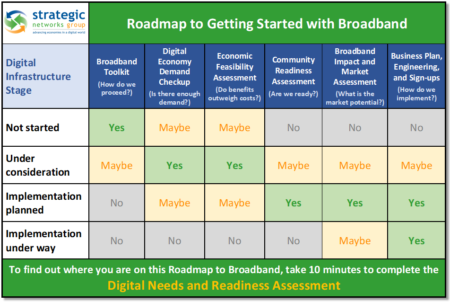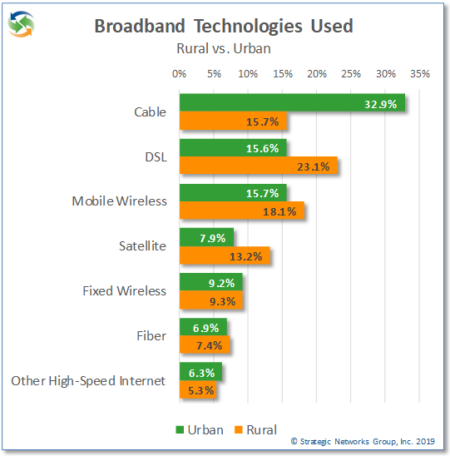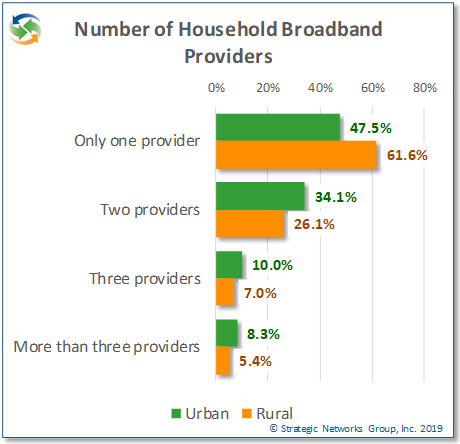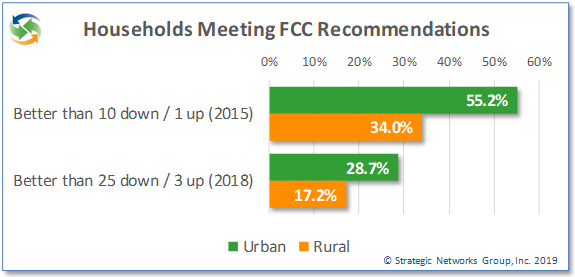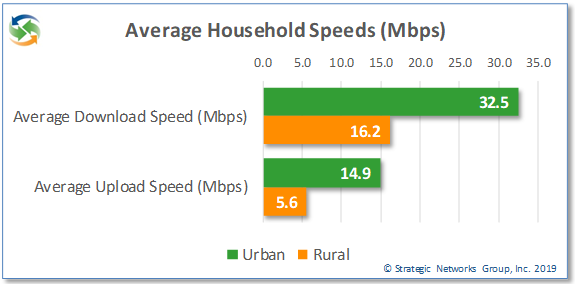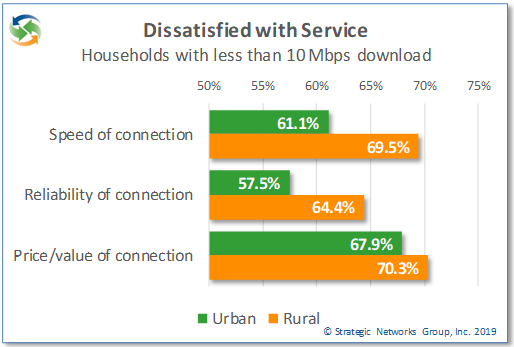
With more and more funding for broadband – for example, the US’s $100 billion through the American Jobs Plan, or Canada’s Universal Broadband Fund – unserved and underserved localities should be encouraged by these positive and significant steps. However, there are a number of uncertainties:
- Will the broadband funding legislation actually pass? – intact? – and when?
- Government investment in broadband will not cover all the unserved and underserved areas – so who will get the funding?
- How long will the application process take to define? – what will be the terms and conditions? – and when will funds actually be available to localities?
- Will localities be able to over-build existing incumbent networks – even if they are not future-proof? – if no, to what extent will digital infrastructure fully cover the locality? Will all have access to online health, education, workforce development, smart community services, etc.?
- Do local leaders understand why some individuals and businesses do not take advantage of what broadband is already available? Does the locality have strategies and eligible funding to bridge digital divides, to bring everyone online, and to maximize community benefits from broadband investments?
SNG recommends that localities proceed with their own and/or private investment to build digital infrastructure and to not lose any additional time in bridging broadband gaps. No locality can wait to catch the next wave of broadband funding. COVID-19 has accelerated the urgency that digital infrastructure be available to all – now.

In parallel to developing their own broadband investment solutions, localities should apply for broadband funding once the application process is available. If their application is funded, great – then use public funds to support and expand a healthy competitive broadband marketplace that connects all local premises with digital infrastructure that can provide needed redundancy by being available to multiple providers.
For those localities that know they have broadband problems, but struggle to find a path forward – especially when potentially large investments are needed … there is an alternative strategy. Localities need to answer key questions on how to solve their broadband needs:
- Where are the broadband gaps and where are the greatest needs in our locality?
- How is the lack of broadband affecting our businesses and residents?
- What technologies make sense to address our broadband gaps? Are we committed to solutions that meet current and long term needs? What investments are needed?
- Will our broadband problem be solved by the private sector service providers? Are there areas of interest and opportunity for private sector providers for accelerating network build-out to our unserved and underserved areas?
- Based on identified broadband gaps and needs, potential for accelerating private sector build-out – what is the roadmap for potential broadband projects?
SNG can help in this process with our Broadband Technical Opportunities Roadmap to answer these questions and empower localities to develop their own strategies so they can effectively engage with service providers and other partners to take action. Broadband is too important to your community’s prospects not to own your digital future.
 As a local leader or elected official, you may need to decide whether or not you need a survey, or a study for your broadband initiative. If the value isn’t clear, or if it doesn’t get you closer to your goal, why spend time and money on a ‘survey’ or another ‘study’? Don’t do it just because another community has.
As a local leader or elected official, you may need to decide whether or not you need a survey, or a study for your broadband initiative. If the value isn’t clear, or if it doesn’t get you closer to your goal, why spend time and money on a ‘survey’ or another ‘study’? Don’t do it just because another community has.
Understand which communities have achieved their broadband goals and how they got there.
If you have areas that are unserved or underserved with broadband, private sector providers have not seen enough of a business case for them to invest. Low density, tough terrain, insufficient take rates to make a business case, etc. are realities that must be overcome and will require more than re-packaging of your market, or expounding on ‘we have a great community’. If service providers have a better return on their investment elsewhere, that is where they will invest.
To get broadband deployed to your unserved or underserved areas there are generally three options going forward – 1) entice a provider to deploy in your area by subsidizing their business case; 2) build your own network to compete directly with other incumbent providers; or, 3) build your own digital infrastructure which multiple providers can then use to provide services (like municipal roads which are built, owned and maintained by the municipality, but anyone can use them).
 Regardless of which option communities choose, elected officials would want to be in the best position to negotiate and to decide the best path forward for their community by understanding the broadband investment options, the market potential, and the community returns on investment (ROI).
Regardless of which option communities choose, elected officials would want to be in the best position to negotiate and to decide the best path forward for their community by understanding the broadband investment options, the market potential, and the community returns on investment (ROI).
As a builder of broadband networks explained, ‘take rates’ and ‘revenue generation’ are really the opposite of what a community wants to achieve. A community needs to focus on the development of a sustainable model that does not restrict, but enables sustainable future growth. What communities nor providers don’t know is what broadband can do to sustain and grow what the community already has, as well as how that growth has been suppressed by lack of or slow broadband investment
For these reasons assessing broadband demand is not a survey, but necessary due diligence on the market potential and choosing your broadband strategy (bringing providers to serve your areas, or building your own) while ensuring the best return for your community.
 We know that providers already have their expected take rates and will use their spreadsheets in developing their own business case. However from SNG’s extensive research, the majority of the community benefits from broadband are off-balance sheet to providers – which means providers under-value their return on investment as compared to community returns on investment (i.e. community benefits). We call this an economic case for investing in broadband – some people call it a government business case. It’s the same reason we have public investment in roads.
We know that providers already have their expected take rates and will use their spreadsheets in developing their own business case. However from SNG’s extensive research, the majority of the community benefits from broadband are off-balance sheet to providers – which means providers under-value their return on investment as compared to community returns on investment (i.e. community benefits). We call this an economic case for investing in broadband – some people call it a government business case. It’s the same reason we have public investment in roads.
For those considering a public-private partnership, if you know that you have a strong market potential (current and future demand) for broadband and value-added services, this will strengthen your position on negotiating how much your community needs invest to make a successful business case. On the other side, if your unserved and underserved areas do not show a strong demand then you may want to limit your risk, or take actions to build up demand. It is also possible that some areas have higher demand than others, which can allow you to be more tactical with the timing and prioritization of broadband deployments.
Data points on market potential inform your investment case for whether you choose to negotiate with an ISP by developing an RFQ or RFI for a public-private partnership, or if you decide to build your own digital infrastructure. We’ve written about this issue in our recent post: Where do we put our efforts to get connected with broadband?
SNG has recently launched the Digital Economy Demand Checkup offering with a regional ISP (who were the ones that requested we do this) and we think it will be of interest to communities everywhere because it:
 Gives local residents and businesses a vehicle to express their need and willingness to sign-up for better connectivity – contact lists for those who want to sign-up can be shared with the provider, finance last mile deployment, inform broadband deployment priorities, etc.
Gives local residents and businesses a vehicle to express their need and willingness to sign-up for better connectivity – contact lists for those who want to sign-up can be shared with the provider, finance last mile deployment, inform broadband deployment priorities, etc.- Provides elected officials with proven tools to collect needed data points to answer the following questions:
- What is the current broadband demand as compared to expected demand from provider’s spreadsheets?
- What is the potential demand that can drive additional revenues for providers, as well as community benefits?
- What are the issues or barriers that need to be overcome to drive demand and meaningful use so that local businesses and residents fully leverage technology?
We are able to address these fundamental investment case issues in a cost effective way with our Digital Economy Demand Checkup. Not only do we identify current demand, but also potential demand and market potential. We don’t know of anyone else that can benchmark demand to increase service provider revenues and maximize local economic impacts. For example, with a municipal service provider we identified a 64% increase in revenues for no additional capital investment. This represents an increase of 47% in Average Revenue Per User (ARPU).
SNG was recently asked by residents from a neighborhood just outside Nashville, Tennessee, where to best put their efforts to get connected with broadband. They have lived in a location for 10 years and it is not serviced with high-speed internet even though they are near where it stops on either end of their community. Asking the incumbent providers in their words “has proven futile” to getting better service. However they have many neighbors who would be interested in better internet service because many have businesses and work from home and they don’t want to move.
At SNG, we understand this challenge, which too many residents and businesses face across North America because of their perceived addressable market, expected revenues vs. cost to service their market, low density, etc. Approaching private sector providers can be ‘futile’ if those providers do not see enough of a business case to invest in your area and when providers have better returns elsewhere.
The challenge to get broadband deployed in unserved or underserved areas is to enable a positive case for investment. Driving awareness and utilization of broadband with local residents and businesses drives local economic growth and community benefits – which makes a case for public investment to bridge broadband gaps.
Two Options Going Forward
There are generally two options going forward – either 1) a public-private-partnership to entice a broadband provider to deploy in your area by subsidizing their business case; or, 2) build your own digital infrastructure which multiple providers can then use to provide services (like municipal roads which are built, owned and maintained by the municipality, but anyone can use them).
Subsidizing a Service Provider’s Business Case
If you choose to subsidize a provider’s business case to bridge their gap between their costs and their expected returns on capital, then local dollars should be used to build infrastructure that the locality owns (like a tower, backhaul fiber, etc.). This retains local ownership and negotiation capability which may be needed if there is poor broadband service because the provider is exercising a market dominant position. Retain ownership and control of your digital future.
In working with providers, there is also the option of conducting a broadband demand assessment to identify people ready to sign-up to new service, as well as assess potential demand for online services. This is local market demand research. Private sector providers are often reluctant to spend their retained earnings on such research, especially if they are unsure there is a business case for them. By quantifying current and potential broadband demand up-front and sharing that with private sector providers, they can apply that data to their business models to see if there is a business case for them that previously ‘flew under their radar’. Having a contact list of people who are ready and committed to sign-up makes that business case for the provider even stronger.
In both these broadband public-private-partnership instances, local funds subsidize one service provider. This may be a tactical, less complicated, and a less involved way for a locality to move forward – who in their right mind would want to take on more work, especially a broadband initiative! However, performance agreements should be negotiated and periodically reviewed to ensure local residents and businesses are getting the broadband they need – and want.
Investing in Digital Infrastructure
The other approach is the locality investing in their own digital infrastructure which is more involved, more complicated, and longer term. But this approach addresses the issue of local ownership and control of essential infrastructure – as with other infrastructure like roads, or electrical where community benefits are significantly greater than a private sector business case. At SNG we call this the economic case for investing in broadband. The example of Ammon, Idaho, proves that it is possible for a locality to own their digital future while also allowing multiple providers to provide competitive, robust internet services that meet the needs of local residents, businesses, and organizations.
Deciding where and how to get started depends on the addressable market of the locality (i.e. broadband market potential), the local champions available to drive the process, the local organizational capacity to support a broadband initiative, and whether local residents, businesses, and organizations (government, education, health) have an understanding and vision of how they can benefit from using online practices. The table below outlines a roadmap to get started with broadband and SNG’s suite of services that have been designed to help you make the right decisions based on your needs and circumstances, no matter what stage you are at in the process.
Where and How to Get Started with a Broadband Initiative
If you are interested in assessing at what stage your locality is in the process of getting broadband – because it is a process – we have the Digital Needs and Readiness Assessment that your local broadband champion can take online. When they completed the 10 minute online survey, a report will be generated and automatically be emailed to them. We developed this tool specifically to help local leaders understand at what stage their locality is and to help them prioritize their community goals and priorities. SNG’s goal with this is to help local leaders make better informed decision on how they can and need to move forward in a way that is pragmatic, clear, and cost-effective.

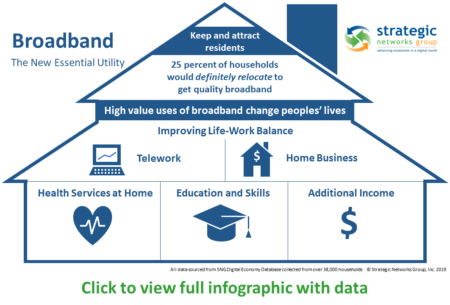 SNG Research Brief – Household Broadband
SNG Research Brief – Household Broadband
Access to robust and competitive broadband is essential for any community to survive, let alone thrive. Unserved or underserved areas continue to exist in many localities, whether because of limited or no choices for service providers, outdated technology, etc. This research brief provides some insights and data points on the current state of access for households, with focus on rural communities and how they compare to urban areas.
From SNG’s research of over 19,000 households across the North America we are able to reveal some of the important findings that proponents of broadband need to know. These insights are from household data collected directly by SNG rather than statistics provided by service providers or other agencies.
Technologies used
While fiber deployment and use are increasing, cable remains the dominant broadband technology overall with 23.6% of households, followed by DSL at 19.6%. However, the picture changes when you compare urban and rural areas.
While cable dominates urban markets, DSL is still the most used technology in rural areas – which suggests that this is due to the lack of other available options. Fiber use is low for both urban and rural households. For rural areas in particular, the lack of cable and fiber options drives up the use of mobile wireless and satellite as an alternative.
Broadband Service Priorities and Satisfaction
From a user perspective, technology is only relevant for its impact on connection speed, reliability, and price. Understandably, much emphasis is put on speed of connection, since this is how services are sold. However, when it comes to how households prioritize their selection of service, reliability is cited as highest priority with 88% of households compared to 77% who say speed is a high priority and 66% who say affordability is a high priority. These priorities are almost identical between rural and urban households.
So, if that is what households expect, then what is available and how do they feel about the connections they have?
More than half (54%) of households have only one broadband provider available, clearly indicating a lack of choice for most households. For rural areas nearly 62% of households have only one broadband provider to choose from, with implications for competitive service price and quality.
This is reflected in rural service speeds, price, and satisfaction. On average, rural households get approximately half the download speed as urban households and just over one third the upload speed. When it comes to meeting current FCC speed recommendations, 28.7% of urban households meet or exceed the recommended 25 Mbps download and 3 Mbps upload speed, while only 17.2% of rural households do so. Even looking at the old FCC recommendation of 10 Mbps down and 1 Mbps up, just over one third of rural households meet those speeds.
More than 61% of rural households get less than 10 Mbps download speed for an average cost of $70 per month. Overall, rural households pay a monthly cost of $4.38 per MB compared to $2.32 per MB for urban households, almost double the cost. Rural households have less choice and slower speeds and spend more for the same or poorer service.
As a result, 70% of rural households subscribing to less than 10 Mbps download speeds are dissatisfied with the value of their service for the price they pay, and 69% are dissatisfied with the speed of service. In addition, 64% of households are dissatisfied with the reliability of their service. The satisfaction levels are only slightly better for urban households with less than 10 Mbps download, with 68% dissatisfied with value, 58% with speed, and 68% with reliability.
This is partly explained by the different mix of technologies deployed in rural areas. With a higher proportion of DSL and satellite connections used in rural areas the quality of speed and reliability is reflected in overall satisfaction levels, resulting in lower satisfaction with value for the price of the service. Fiber connections generate the highest satisfaction levels by far, followed by cable service. Very few households are fully satisfied with DSL or satellite services, and yet for some these are their only options for broadband connectivity.
34.7% of households say that their fiber connection is “worth every penny” for value satisfaction, compared to 7.6% for cable, 4.6% for DSL, and 2.0% for satellite. Another 48% say the value of fiber is “acceptable for what I pay”, versus 38% for cable, 27% for DSL, and 15% for satellite. Similar satisfaction levels by technology are shown for connection speed and reliability. More than any other technology, fiber is clearly a solution that meets household priorities and expectations.
The Implications for Households and Communities
Households without good broadband available to them may choose not to take any of the options forgoing the speed and reliability they need. Households in this situation will not use the internet to its fullest capacity, missing opportunities for them to fully benefit from what the internet can offer – such as new income opportunities, remote access to health care and education. This negatively impacts community well-being as inadequate broadband risks losing population and difficulty in attracting new residents and businesses. This is particularly challenging for smaller, rural communities where SNG research has shown that they are more likely to lack quality broadband and have the most to lose in terms of population decline, especially among youth.
See how a rural county got the support and funding to build the digital infrastructure they need to thrive – Custer County Broadband Impact and Market Assessment.
Find out more about SNG Solutions for Local Economic Development.

There are still far too many communities without broadband and funding agencies do not have enough money to fund all of the necessary digital infrastructure and last mile connectivity to individual premises. It is time to start looking at different ways to deploy broadband into unserved and underserved areas.
How can funding agencies get ten times more broadband coverage per tax dollar invested?
Localities without broadband will lose residents, businesses, and their tax base. How many communities exist today without roads, electricity, or water and sewer systems? However, areas remain unserved or underserved because there is not enough of a return (profit) for broadband service providers to justify the investment. Whether private, public, or private-public partnerships fund broadband, investments will need to be made and financed for such localities to survive, let alone thrive. A pivot in approach is needed to approach broadband as digital infrastructure.
Current Investment Challenges with Broadband Planning and Investment
- Unserved and underserved areas exist because there is not enough of a business case (profit) for private sector providers to invest
- Many of the unserved or underserved localities have limited resources (financial and staffing) and expertise to develop comprehensive broadband plans that are economically sustainable
- Inertia and gridlock that leads to accepting the status quo after spending time and money on traditional feasibility studies that are fundamentally flawed in trying to make a private sector business case for broadband where none exists.
Broadband Funding Program Challenges
When broadband funding is available, how can funding agencies determine whether:

- Community leaders are staffed and prepared to develop and launch a sustainable solution? In other words, are they committed and ready?
- The project is comprehensive and sustainable
- Potential project risks can be identified to avoid pitfalls, or unsustainable networks that do not resolve the lack of broadband access
- Public funds invested will generate the greatest local economic impacts and community benefits
Digital Infrastructure
Broadband, like roads, is essential infrastructure. Retaining businesses, jobs, and population are all benefits that broadband enables for a locality, but are off-balance sheet to private sector providers. That is why broadband needs to be approached as digital infrastructure – it has become an essential service. Governments invest in infrastructure because there are public benefits that private sector entities cannot monetize – these are externalities, or what we at SNG also call community benefits.
Economic and community development agencies know they must address broadband gaps if their localities are to remain viable. For example, despite fiscal constraints and resistance to public investment in broadband by vested interests, States are allocating $10million, $20million or $100 million to broadband, which are significant legislative wins. However, if the cost to expand broadband to unserved areas is $1.3 to $1.7 billion (as was with the State of Tennessee), it will take at least a decade if reliant upon state funding at those levels – and no community can afford to wait five to ten years for broadband. Anyone that can leave, will have left for better education, healthcare, public safety, economic opportunities, and overall quality of life. Businesses and high value individuals will be very difficult to retain, let alone attract. Struggling localities will continue an accelerating downward spiral.
In the absence of funding private sector investment, municipalities have tried to establish a municipal or utility-based ISP, taking on a bad business case while directly competing with incumbents. Often these projects are locked into the traditional mindset of building a municipal retail ISP as “The” solution. Some have been successful, most have struggled. In many States municipalities are prohibited or severely restricted in taking this retail ISP services approach.
Another approach is funding projects using private service providers to deploy to unserved areas, typically with matching funding. Preference is given to those projects that offer the greatest matching funding to State dollars. This may be straightforward and may ‘check the box’ for broadband service, but choosing one provider to build-out to an area is essentially using public funds to subsidize one provider among many. While it may be compelling for practical reasons, this approach assumes that private providers can and will execute quickly with deployments, as well as provide competitive levels of service to address local broadband demand – current and future. However, subsidizing one service provider in a market tilts the playing field and inhibits healthy competition. Furthermore, problems can arise when profit-driven service providers interests do not align with a locality’s interests and needs – such as deploying smart community services.
Without other options, localities will continue to see under-investment in digital infrastructure even when community benefits outweigh private sector returns on investment.
Investing in Digital Infrastructure Planning
A more recent strategy is investing in digital infrastructure planning which enables funding agencies to leverage ten times what they are currently receiving from their broadband investments. The ten-fold (10x) difference is funding a network build (e.g. $1M for Ammon, Idaho) versus investing in planning to self-finance digital infrastructure (e.g. $100K). Funding agencies can get greater leverage from their broadband investment dollars by helping communities take the right action to invest in their own digital infrastructure than they do by investing directly in that infrastructure themselves.

The challenge with developing a Digital Infrastructure Strategy for Communities and Regions is that they need help in understanding how this model can work and they need technical assistance to take initial steps. The starting point is assessing potential municipal cost reductions, subscriber savings, local economic growth, and smart community service benefits. When these community benefits outweigh digital infrastructure costs, it is possible to self-finance. For example, when telecom and internet costs can be reduced by 86% (see economic case of Ammon, Idaho) those municipal cost reductions are existing budgets that can be reallocated to finance the digital infrastructure investment.
Funding agencies can play a critical role in broadband funding and policies. They can invest in communities rather than a network build. Broadband and digital infrastructure are not ends in themselves, but means to enable good-paying local jobs, grow local economic opportunities, and enhance local quality of life.
What can funding agencies do? A pragmatic, evidence-based approach is needed to make important decisions on broadband funding awards, while minimizing additional work for localities. Furthermore, with uncertainty on the level of broadband funding that will be available, an arms-length, objective process to assess and rank potential projects is needed to:
- Prioritize where funding should be invested for projects that are essentially ‘ready to go’ because they can be self-financed based on economic feasibility and community returns on investment (retaining and growing local business and jobs, access to health and educational services, etc.). These projects would get help with planning, getting started, and implementing a digital infrastructure approach – which is a more efficient use of State dollars when planning costs one-tenth as compared to directly investing in infrastructure.
- More efficient use of public dollars by investing in planning and demand aggregation enables areas to self-finance their digital infrastructure allows the remaining available public dollars to be allocated to areas that have the greatest need, but who may not have the means to address their needs themselves.
- Determine how funding be more efficiently and effectively spent (infrastructure, technical support, demand aggregation, etc.) based on each area’s identified needs, thereby maximizing community benefits per State dollar invested.
A funding agency’s role is most valuable in helping achieve economic and community development goals, while ensuring communities are ready and have the means to implement sustainable digital infrastructure plans.
Maximizing community benefits per broadband dollar invested
How can funding agencies determine where, when, and how to invest to address digital infrastructure needs of communities?
The first step is for communities to answer the question: Do the community benefits from a digital infrastructure investment outweigh the costs for the community/region?
Based on SNG’s long track record and unique experience in working with funding agencies in this way, we recommend the following:
- Assess Economic Feasibility of broadband infrastructure and whether potential community benefits outweigh costs over longer term (e.g. 15-20 years)
- Create a process for communities to self-opt in by providing a standardized input form localities can complete and provide the necessary information
- Those communities that have provided their information will receive an assessment of economic feasibility for their community or region – an arms-length assessment to support their broadband planning. Additionally the localities will have a geographically based phased plan based on estimated demand — to ensure their broadband planning is demand driven.
Outcome from Assessing Economic Feasibility: The funding agency will have an assessment of potential returns from broadband investment for each community / region, which can be ranked in terms of cost-benefit ratios and project sustainability. Additionally, identified municipal cost reductions can be used as matching funds for grant applications. See example of job and business impacts assessed for Custer County, Colorado.
- For communities that have participated in the economic feasibility assessment and their proposed projects prove to be sustainable, invite local leadership (council, broadband committees, etc.) to take the Community Readiness for a Digital Future
- Leadership teams from each community / region take 10-15 minutes to complete an online survey with objective metrics to assess whether or not they are doing the right things needed to get their project across the finish line. It also uncovers different perspectives between stakeholders – is there alignment, or are there gaps in their perspectives and/or approach? Time, money, and political capital can be saved by uncovering and addressing previously unseen gaps.
Outcome from Assessing Readiness: The funding agency receives a readiness summary of communities and regions who may require broadband funding. This enables the State to have a clear picture of which projects are ‘ready to go’ and which projects may require more preparation and technical support, which can be accompanied with broadband funding.
- Based on Economic Feasibility and Readiness findings, prepare a summative ranked list on impacts (increases in GDP, business and job growth, etc.) from State broadband investment dollars with details incorporated on the Readiness of each project – and if needed, how they can be helped to become ready and develop sustainable projects. This is critical input to the success of any broadband planning process at a community and regional level.
An implicit outcome of the steps described above is that communities will reveal their level of interest and commitment to act through their participation. While funding agencies can assist communities, it is essential that the local leaders are willing and able to take action. Funding agencies will know:

- Which communities have the greatest need for assistance
- What type of assistance they need
- How motivated they are to take action on their own behalf
- How ready they are to take action
- What next steps will be most effective for communities ready for assistance
Every community has different characteristics and faces different challenges. Those with the most need may not provide the greatest impact at a State level, but the benefits and impacts at a local level can be a matter of survival for a community or region. With relatively small investments the state can assist such communities to own their digital future and, collectively, the impact on the State can generate significant economic impacts without impractical and limited investments in the broadband networks themselves.
With all of the hub-bub around broadband build out, it is important not to forget about utilization… and how you drive meaningful utilization in your community.
A great compliment to our recently announced Market Demand Snapshot is an Action Plan for Broadband Utilization. Designed to spur economic development and job creation, and incorporating feedback from stakeholder workshops, SNG can provide you with will provide the tactics, methods and tools needed to drive broadband adoption and meaningful use.
As we continuously preach, broadband availability alone is not enough to realize its social and economic benefits. An understanding of how to effectively use of broadband for commerce, citizen services and the positioning of rural counties as attractive areas for 21st century business and living will play a critical factor in their long-term success of your broadband investment and your ability to impact the lives of the citizens and businesses already located in the regions.
 SNG can help your region with effective strategic planning for impactful economic development with a sound, three-step approach:
SNG can help your region with effective strategic planning for impactful economic development with a sound, three-step approach:
- Identifying and rallying the key stakeholders that need to be actively engaged in the economic development through broadband adoption process via the application of broadband best practices;
- Laying the foundations for an actionable strategic plan that will enhance broadband adoption, meaningful use and job creation across identified verticals of interest, e.g. residences, schools, businesses, libraries, healthcare facilities, public safety and government;
- Driving efficiencies into the community through the adoption of digital purposes and broadband enabled applications that increase quality of life, the growth of economic and employment opportunities, and spurring commercial investment locally.
If you are interested in learning more about how this structured approach can drive demand, adoption and meaningful use to advance your region’s ability to compete globally, attract investment, realize efficiencies, and create jobs, contact Michael Curri.
Current Economic Impact of Broadband and Opportunities Revealed in e-Solutions Benchmarking and e-Strategy Reports from SNG
 (October 28, 2010) e-NC and SNG announced today the findings of a comprehensive study of residents and businesses in the state of North Carolina. In all, 30,000 households and 70,000 businesses and organizations were surveyed to uncover utilization of broadband and e-solutions statewide, with 1,492 households and 6,266 businesses and organizations responding. The e-Solutions Benchmarking and accompanying e-Strategy report from SNG was funded by a grant to the e-North Carolina Authority by the National Telecommunications and Information Administration (NTIA) of the U.S. Department of Commerce.
(October 28, 2010) e-NC and SNG announced today the findings of a comprehensive study of residents and businesses in the state of North Carolina. In all, 30,000 households and 70,000 businesses and organizations were surveyed to uncover utilization of broadband and e-solutions statewide, with 1,492 households and 6,266 businesses and organizations responding. The e-Solutions Benchmarking and accompanying e-Strategy report from SNG was funded by a grant to the e-North Carolina Authority by the National Telecommunications and Information Administration (NTIA) of the U.S. Department of Commerce.
The e-North Carolina Authority (e-NC), and its predecessor the Rural Internet Access Authority, have worked to improve both the supply and demand side of the broadband issue since 2001. The SNG study, conducted between February and October 2010, revealed the potential of broadband for competitiveness and economic opportunity:
- Nearly one in five (18%) of new jobs were created as a direct result of Broadband Internet. Small businesses (less than 20 employees) are especially dependent on Broadband Internet as 28 percent of new jobs in that sector are attributed to using the Internet.
- More than half of all businesses (54%) said that they would not be in business if they did not have broadband while two in five (41%) would have to relocate if broadband was not available in their community;
- The number of households either currently running (31%) or planning to run a business from their home in the next twelve months (14%) is nearly half (45%) of North Carolina’s broadband
households; - Even more broadband households are either now using (41%) or planning to use (24%) broadband to sell items online. That’s nearly two-thirds (65%) of broadband households using it to at least supplement their income;
- Most (85%) of home-based businesses said that broadband was essential to their business.
“We see in these findings how important broadband is to creating new jobs and improving quality of life in North Carolina,” said Michael Curri, president of SNG. “We now have the data that shows why it is so critical to promote broadband infrastructure along with adoption in North Carolina. e-NC has been and continues to be a leader in this field in making sure that North Carolina captures the benefits of broadband in the years ahead.”
The e-Strategy report revealed clear and direct paths to further leverage broadband and available resources to expand broadband’s reach. E-NC will be tackling the state’s challenges with strategies for:
- Better connectivity in un-served and under-served communities
- Mobile broadband to extend flexibility and reach
- Driving broadband adoption
- Supporting adoption of new and ground-breaking e-solutions
- Collaboration, utilizing stakeholders, community networks and anchor institutions
By employing e-strategies on multiple fronts, North Carolina will be poised to further leverage broadband for job development and economic growth.
“Findings show thirty-nine percent of households say they would likely relocate if broadband was not available, while 55 percent of organizations say broadband is essential for staying where they are,” says Jane Patterson, Executive Director of e-NC. “These numbers illustrate why it is important for all of us to continue to address the issue of broadband expansion in North Carolina. The e-NC Authority will continue to work with all providers to encourage greater broadband coverage across the state. We will also place a special focus on working with small businesses to show how they can increase their revenue potential through use of the Internet.”
About e-NC Authority
The e-NC Authority is the state initiative to link all North Carolinians – especially those in rural areas – to the Internet. The purpose of this organization is to use the Internet as a tool for helping people to improve their quality of life. Affordable Internet service will provide North Carolinians with increased access to commerce, health care, education and government services. Through the Internet, rural North Carolinians can utilize resources not located in their areas, contact friends and experts, grow their businesses and increase their personal knowledge – all while preserving the lifestyle that is an integral part of who they are. The e-NC Authority was preceded by the Rural Internet Access Authority, and was created on Aug. 2, 2000 by the N.C. General Assembly. The organization became fully functional in January 2001 and is governed by a commission appointed by the governor and the N.C. General Assembly. By legislative mandate, the e-NC Authority is housed and staffed by the N.C. Rural Economic Development Center. Visit www.e-nc.org.
DEi Expands to Score Industry Sectors
In June, we announced SNG’s popular new offering: the Digital Economy index (DEi). A composite score of how organizations use seventeen (17) Internet-enabled applications, or “e-solutions,” DEi is a unique assessment tool that can be used at any industry, sectoral, or geographic analysis of businesses and organizations to drive productivity and competitiveness.
 DEI enables businesses and organizations to see where they stand relative to their peers. It can also produce customized scorecards at an individual organizational level showing where improvements can be made to be more productive and competitive in the 21st century knowledge economy.
DEI enables businesses and organizations to see where they stand relative to their peers. It can also produce customized scorecards at an individual organizational level showing where improvements can be made to be more productive and competitive in the 21st century knowledge economy.
As SNG’s DEi is a composite score of how organizations use Internet-enabled applications, or “e-solutions,” to drive productivity and competitiveness, DEi can also be shown strengths and weaknesses within industry sectors.
As we’ve just completed our latest work in North Carolina, let’s take a look at the DEi results by industry and sectors for North Carolina. The overall median DEi for all organizations surveyed in North Carolina is 6.99, with 50 percent of organizations falling between a DEi of 5.34 and 8.45. These scores compare utilization of e-solutions between industry sectors and we’ll explore what that means below.

Opportunities for increasing DEi, with resulting economic benefits, can be identified for potential action to increase the utilization of e-solutions by businesses and organizations.
For example, in North Carolina, the Construction industry (DEi = 6.17) and Information Services industry (DEi = 8.16) have among the lowest and highest median use of 17 types of Internet applications or processes. The average DEi for North Carolina was 6.99 (high is better).
Some of the differences in the DEi score reflect unique characteristics of the structure of that industry. For example, the Construction industry has very high use of certain applications, such as supply chain management and document transfer, while having low use of tele-working.
One interesting example of using the DEi is a comparison of the Education industry (high DEi of 7.96) and Health and Human Services industry (low DEi of 6.60). Comparing these two industries highlights the extent to which the Education industry has pioneered such Internet uses as direct service delivery and remote counselling, while Health and Human Services lag significantly in these areas.
SNG’s proprietary DEi analysis is very useful in designing initiatives aimed at increasing the level and productivity of broadband adoption. For proponents of broadband as a critical tool for economic development, DEi shows where organizations and industries are leveraging broadband – and where they should be employing more e-solutions.
Back to Down Under
 It took several weeks to sort out, but Australia’s hung parliament emerged with the Labor party still in power – and the National Broadband Network (NBN) very much alive and well. As a refresher, the proposed plan by the Labor party for a $43 billion National Broadband Network (NBN) will provide 100 megabits per second broadband access to approximately 93 percent of the Australian premises. Currently around 62 percent of households have broadband now but – for the most part – it is slow and expensive. In conjunction, the plan calls for a boost in broadband investment for businesses with hopes that it will directly support economic growth during the rollout.
It took several weeks to sort out, but Australia’s hung parliament emerged with the Labor party still in power – and the National Broadband Network (NBN) very much alive and well. As a refresher, the proposed plan by the Labor party for a $43 billion National Broadband Network (NBN) will provide 100 megabits per second broadband access to approximately 93 percent of the Australian premises. Currently around 62 percent of households have broadband now but – for the most part – it is slow and expensive. In conjunction, the plan calls for a boost in broadband investment for businesses with hopes that it will directly support economic growth during the rollout.
The influential Australian Industry Group lobby calls the NBN an “unprecedented opportunity” for business innovation and with the ubiquitous nature of the fibre roll-out – bringing with it unparalleled speed and reliability. The group cites the long term opportunities that broadband “everywhere” brings, creating an environment where Australian businesses are able to create services and business models that do not yet exist on a network which will give Australia the fastest internet access in the world.
Some of the NBN’s first cables are being laid in Willunga. This is trial site in Southern Australia; one of five across mainland Australia. The state of Tasmania is already offering fibre-based services as part of the NBN roll-out and hopes to complete its roll-out by 2015; at least 3 years ahead of the mainland.
The Australian roll-out target is expressed in terms of coverage: any premise in a street with fibre rolled down it must be connected within a few days of demand. Naturally, free connections are being offered as the roll-out takes place. Activation only occurs where a customer asks a retail service provider to provide service over the fibre.
Surprisingly, only 50 percent of households in Tasmania have taken the free connection compared with over 80 percent in the mainland trial sites. It is not clear what explains Tasmania’s experience. Perhaps communication is poor (i.e. low or no awareness campaign activity) and customers expect Telstra’s copper network to remain; Telstra is planning to migrate all its customers to the new network. Tasmania is passing legislation requiring customers to provide written notice if they wish to opt-out of a free connection (versus opt-in as now).
Worse, less than 1 in 10 customers connected in Tasmania have chosen to activate a broadband service over fiber. Perhaps, the offers made by several internet service providers are not attractive. A leading provider, iiNet, is providing exactly the same plans on fiber in terms of price and down load caps as it offers for ADSL2+ except that until June 2011 the down/up stream speeds will be increased from 25/2 (same as ADSL2+) to 100/8 Mb/s. Customers may prefer to stay with their current connection on ADSL2+ than become “guinea pigs” on the NBN network. That coupled with the “hassle” of changing providers, the question becomes whether the broadband status quo is unacceptable enough for people to spend the time and money to switch to the NBN? And do citizens understand the value of the opportunities afforded by the new fibre network?
The uptake challenges illustrate what we always say – Field of Dreams is a nice movie, but “build it and they will come” does not work in the real world. To ensure that individual businesses, organizations and households connect to the NBN, Australia’s leaders need to promote adoption of those e-solutions that are customized to their needs. To maximize the return on investment requires addressing local / regional drivers and barriers and with it appropriate awareness and adoption programs at a regional level. By following the Broadband Lifecycle, Australia will see major payoffs for their broadband investment in terms of productivity, competitiveness, and quality of life.
As always, thank you for your continued support. If you have any questions or feedback, please don’t hesitate to get in touch!
Current Economic Impact of Broadband and Opportunities Revealed in e-Solutions Benchmarking and e-Strategy Reports from SNG
 (October 28, 2010) e-NC and SNG announced today the findings of a comprehensive study of residents and businesses in the state of North Carolina. In all, 30,000 households and 70,000 businesses and organizations were surveyed to uncover utilization of broadband and e-solutions statewide, with 1,492 households and 6,266 businesses and organizations responding. The e-Solutions Benchmarking and accompanying e-Strategy report from SNG was funded by a grant to the e-North Carolina Authority by the National Telecommunications and Information Administration (NTIA) of the U.S. Department of Commerce.
(October 28, 2010) e-NC and SNG announced today the findings of a comprehensive study of residents and businesses in the state of North Carolina. In all, 30,000 households and 70,000 businesses and organizations were surveyed to uncover utilization of broadband and e-solutions statewide, with 1,492 households and 6,266 businesses and organizations responding. The e-Solutions Benchmarking and accompanying e-Strategy report from SNG was funded by a grant to the e-North Carolina Authority by the National Telecommunications and Information Administration (NTIA) of the U.S. Department of Commerce.
The e-North Carolina Authority (e-NC), and its predecessor the Rural Internet Access Authority, have worked to improve both the supply and demand side of the broadband issue since 2001. The SNG study, conducted between February and October 2010, revealed the potential of broadband for competitiveness and economic opportunity:
- Nearly one in five (18%) of new jobs were created as a direct result of Broadband Internet. Small businesses (less than 20 employees) are especially dependent on Broadband Internet as 28 percent of new jobs in that sector are attributed to using the Internet.
- More than half of all businesses (54%) said that they would not be in business if they did not have broadband while two in five (41%) would have to relocate if broadband was not available in their community;
- The number of households either currently running (31%) or planning to run a business from their home in the next twelve months (14%) is nearly half (45%) of North Carolina’s broadband
households; - Even more broadband households are either now using (41%) or planning to use (24%) broadband to sell items online. That’s nearly two-thirds (65%) of broadband households using it to at least supplement their income;
- Most (85%) of home-based businesses said that broadband was essential to their business.
“We see in these findings how important broadband is to creating new jobs and improving quality of life in North Carolina,” said Michael Curri, president of SNG. “We now have the data that shows why it is so critical to promote broadband infrastructure along with adoption in North Carolina. e-NC has been and continues to be a leader in this field in making sure that North Carolina captures the benefits of broadband in the years ahead.”
The e-Strategy report revealed clear and direct paths to further leverage broadband and available resources to expand broadband’s reach. E-NC will be tackling the state’s challenges with strategies for:
- Better connectivity in un-served and under-served communities
- Mobile broadband to extend flexibility and reach
- Driving broadband adoption
- Supporting adoption of new and ground-breaking e-solutions
- Collaboration, utilizing stakeholders, community networks and anchor institutions
By employing e-strategies on multiple fronts, North Carolina will be poised to further leverage broadband for job development and economic growth.
“Findings show thirty-nine percent of households say they would likely relocate if broadband was not available, while 55 percent of organizations say broadband is essential for staying where they are,” says Jane Patterson, Executive Director of e-NC. “These numbers illustrate why it is important for all of us to continue to address the issue of broadband expansion in North Carolina. The e-NC Authority will continue to work with all providers to encourage greater broadband coverage across the state. We will also place a special focus on working with small businesses to show how they can increase their revenue potential through use of the Internet.”
Visit the e-NC site to see the complete results>>
About e-NC Authority
The e-NC Authority is the state initiative to link all North Carolinians – especially those in rural areas – to the Internet. The purpose of this organization is to use the Internet as a tool for helping people to improve their quality of life. Affordable Internet service will provide North Carolinians with increased access to commerce, health care, education and government services. Through the Internet, rural North Carolinians can utilize resources not located in their areas, contact friends and experts, grow their businesses and increase their personal knowledge – all while preserving the lifestyle that is an integral part of who they are. The e-NC Authority was preceded by the Rural Internet Access Authority, and was created on Aug. 2, 2000 by the N.C. General Assembly. The organization became fully functional in January 2001 and is governed by a commission appointed by the governor and the N.C. General Assembly. By legislative mandate, the e-NC Authority is housed and staffed by the N.C. Rural Economic Development Center. Visit www.e-nc.org.
About Strategic Networks Group
SNG is a group of broadband economists who develop strategies for most effectively leveraging broadband investments. We look to help make the most broad-reaching and transformational impacts that broadband can bring enable businesses, communities and regions by delivering the data and analysis decision makers need to maximize broadband’s potential. Our goals: economic development, social advancement, increased productivity and competiveness. Learn more about SNG online at www.sngroup.com and discover how broadband market analytics can accelerate regional economic development.
PDF Download
Fill in the following form and you will receive a message in your inbox with a link to download the “North Caroline Findings 2010” PDF.
[contact-form 2 “Contact form – Download”]
Why you should ensure you’ve got visibility on carrier-provided broadband data
NTIA administrator Larry Strickling recently expressed his confidence that broadband service providers will not only provide the detailed supply data requested by his agency (which includes more data elements than has ever been provided for a broadband mapping project), but also that they would waive the confidentially provisions that keep this data from being associated with specific companies. Though we certainly hope Mr. Strickling is correct, we don’t believe this will happen. And, just in case we are right, we recommend that states be ready to gather as much broadband data as they can – without relying too much on carrier cooperation.
We suggest a two-pronged approach. On one hand, states should work closely, in good faith, with carriers to develop ways in which they can provide the data elements set forth in the NOFA while preserving their confidentiality. However, we warn states against becoming too dependent on carrier cooperation in the design and execution of their broadband mapping programs.
The reason: carriers may perceive the public interest goals of NTIA’s broadband mapping effort as too much at odds with their own self interests. Because the truth is: these companies are run to maximize shareholder value—not the public interest.
On the other hand, states need to build their mapping programs to include a strong multi-source data collection process that not only satisfies NTIA’s requirement for verification of carrier-supplied data, but also can “fill-in” for that data if carriers are either unwilling or unable to provide it. That’s what we call an “augment and verify” strategy.
Isn’t that what Strickling means when he says that if carriers refuse to comply, “There are other ways to collect this [data]: there are survey techniques and other ways to collect this information short of the carrier?” “We have appropriated $350 million” to this task, he continues, and “we are expecting the states to be creative, to be collaborative, to work together, and to find some new ways to collect the data, whether or not it is supplied by the carrier.” And he concludes: “Once that is made clear to [the carriers] at the most senior levels, then this thing will work itself out.”
It’s not so simple…
That’s where we beg to differ. Our guess is that, if we just hope “this thing will work itself out,” it probably won’t – because carriers have decades of practice in stonewalling to get their way. However we agree that, as Strickling suggests, the best way to get carrier cooperation may very well be for each state to gather as much broadband data as it can without relying on them, while continuing to invite their cooperation in a shared national effort to serve the public interest.
We strongly believe that if we heed Strickling’s invitation to be creative and collaborative and “work together… to find… new ways to collect the data,” things may work out just fine mapping efforts can succeed. The choice is up to state decision makers as they evaluate their options in the next two weeks. Our suggestion: work respectfully with carriers to obtain their data on mutually acceptable terms, but also augment and verify.


